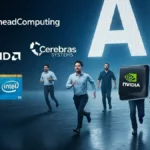HP has launched three new notebooks less than an inch thick including two new models in the high-end Envy range featuring aluminum and magnesium construction.
Timed for release around October 22 to take advantage of the launch of Windows 7, the offerings start with the Pavilion DM3 at $549 and the ProBook 5310m at $699, rising to two new versions of its ultrathin Envy line, with prices starting at $1,699.
The company reckons demand for thin and light PCs will rise faster than the total notebook market in the US over the next five years.
“If there’s one message that explains our focus, it’s that less is more,” said Stacy Wolff, head of PC notebook design for HP. “Notebooks have become a status symbol for users, who are looking for high-quality materials and simple designs.”
.jpg)
The ProBook range features Intel Celeron or Core 2 Duo SP9300 chips and weigh in at 3.7 pounds. It has a 13.3-inch screen and the low-voltage Celeron version has a claimed battery life of up to seven hours. Anodized aluminum replaces the earlier plastic case. It comes with 802.11n Wi-Fi, and optional Gobi 3G wireless broadband.
A 320GB hard drive and 2GB RAM is standard, but there is no built-in DVD drive. A separate Linux partition permits quick booting of a web browser, together with the ability to access Outlook calendar and contacts.

The top end Envy 13 and 15 notebooks use Intel’s new Core i7 chips and come with aluminum and magnesium construction, switchable graphics for performance or power management, screens claimed to be twice as bright as competing models, and a Slim Fit ‘slice’ battery said to be able to deliver up to 18 hours use on the Envy 13 and seven hours for its big brother.
Weighing in at just over 5 pounds, the Envy 15 comes with 16GB of RAM, ATI Mobility Radeon HD 4830 graphics with 1GB of dedicated RAM, up to two RAID-0 SSD drives, and full versions of Corel Paint Shop Pro Photo X2 and Corel VideoStudio Pro X2. Unsurprisingly, it also comes with a top end price tag – $1,799.
Refreshingly, the machines come with what HP describes as ‘minimal desktop clutter and trial software’, but what you and I would call crapware. They are shipped in a streamlined paper cartons using minimal ink, together with a simplified setup poster and documentation contained on an SD card.







